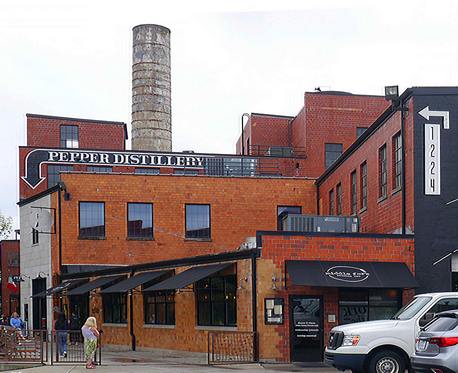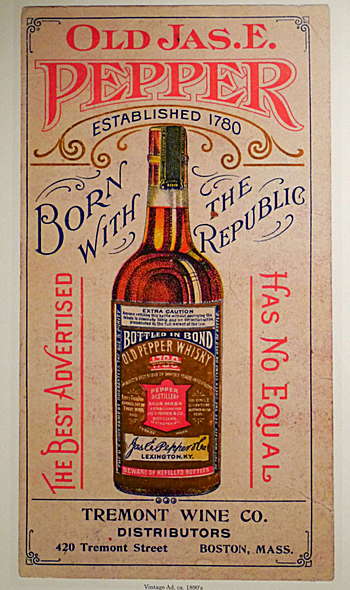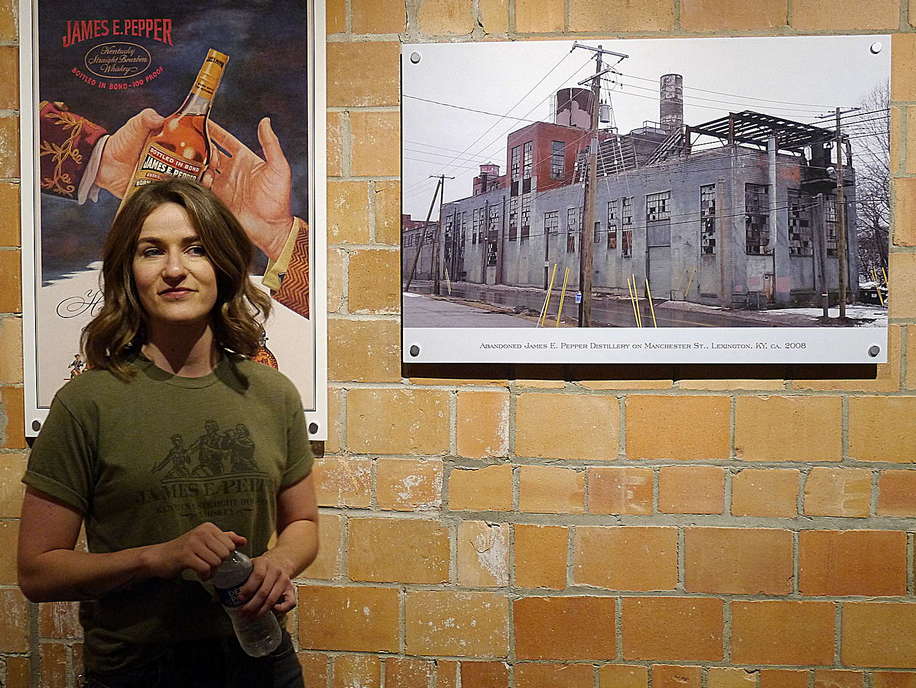We do love a good ghost story, especially when the spirit in question is an iconic brand of Kentucky whiskey. Long before Brooklyn hipsters began muttering about “peppery” notes in a sip of rye, “Pepper” was a huge name in the whiskey world.
 We got a couple of centuries of colorful tales on a tour of the James E. Pepper Distillery (1228 Manchester St. #100, Lexington, KY; 859-309-3230; jamesepepper.com). The ever-so-great grandpappy of the Pepper whiskey line was Elijah Pepper, who began making whiskey around 1780 in Virginia and built a distillery in Woodford County, Kentucky, in 1812. By 1865, the business had passed to his 15-year-old grandson, James E. Pepper. Now part of Brown & Forman, that limestone block National Historic Landmark is the Woodford Reserve distillery (7785 McCracken Pike, Versailles, KY; woodfordreserve.com)—and well worth a tour on its own. James E. Pepper lost the Versailles distillery to a loan foreclosure but went on to construct the new, technically advanced facility on Manchester Street in Lexington in 1879.
We got a couple of centuries of colorful tales on a tour of the James E. Pepper Distillery (1228 Manchester St. #100, Lexington, KY; 859-309-3230; jamesepepper.com). The ever-so-great grandpappy of the Pepper whiskey line was Elijah Pepper, who began making whiskey around 1780 in Virginia and built a distillery in Woodford County, Kentucky, in 1812. By 1865, the business had passed to his 15-year-old grandson, James E. Pepper. Now part of Brown & Forman, that limestone block National Historic Landmark is the Woodford Reserve distillery (7785 McCracken Pike, Versailles, KY; woodfordreserve.com)—and well worth a tour on its own. James E. Pepper lost the Versailles distillery to a loan foreclosure but went on to construct the new, technically advanced facility on Manchester Street in Lexington in 1879.
Not that everything went smoothly. Although Pepper was instrumental in passing the “bottled in bond” legislation and was the first distiller to bottle his own whiskey, he had a weakness for the ponies. By the 1890s, he’d gone bankrupt raising racehorses and had lost control of the distillery. His wife Ella, modestly nicknamed “Queen of the Turf,” went out and bought back horses with her family money. Racing them with great success, she purchased back the distillery out of bankruptcy. Alas, when the Peppers were visiting New York City in December 1906, James fell on a curb, broke his leg, and died of infection on Christmas Eve. Ella sold the business in 1907 but it operated under the James E. Pepper name until market forces dictated its closure in 1958.
Bringing back flavors from whiskey’s golden age
 Fast forward 50 years. Self-described history and whiskey nerd Amir Peay, originally from the Lexington area, discovered that both the factory and the James E. Pepper brand had been abandoned. In 2008, he acquired both and spent a decade restoring the distillery, even re-digging the original well to tap into the limestone water that the Pepper family had used. Because it was a reclamation project, he even got back the federal Distilled Spirits Plant license, DSP-KY-5, indicating the fifth federally licensed distillery in Kentucky. Now the anchor for Lexington’s revived Distillery District, Pepper reopened to the public in 2018.
Fast forward 50 years. Self-described history and whiskey nerd Amir Peay, originally from the Lexington area, discovered that both the factory and the James E. Pepper brand had been abandoned. In 2008, he acquired both and spent a decade restoring the distillery, even re-digging the original well to tap into the limestone water that the Pepper family had used. Because it was a reclamation project, he even got back the federal Distilled Spirits Plant license, DSP-KY-5, indicating the fifth federally licensed distillery in Kentucky. Now the anchor for Lexington’s revived Distillery District, Pepper reopened to the public in 2018.
Marjorie Amon, the visitor center manager, started our tour in the distillery museum, which is particularly rich in advertising posters. We also toured the distillery operations. The gorgeous copper alembic with a separate fractional column is a recreation of the original still based on photographs. And, sure enough, we got to taste a little “fresh make,” or clear uncut spirit straight from the still. Most of the bourbon and rye aging in charred oak barrels, however, was distilled elsewhere, as Peay bought some older distillate when he started the project. That way, he was able to offer 10- and 15-year-old whiskies when Pepper reopened.
We did taste some whiskey halfway through its aging—still a little raw—as well as bottle samples. The brand’s top seller—and we’d argue, the most distinctive—is the 100-proof James E. Pepper “1776” Straight Rye. With a mash bill of more than 90 percent rye and only minimal filtration, it has a striking spiciness and complexity. We like it neat with a few drops of water to open the aromatics. (No ironic hipster beard needed.)

